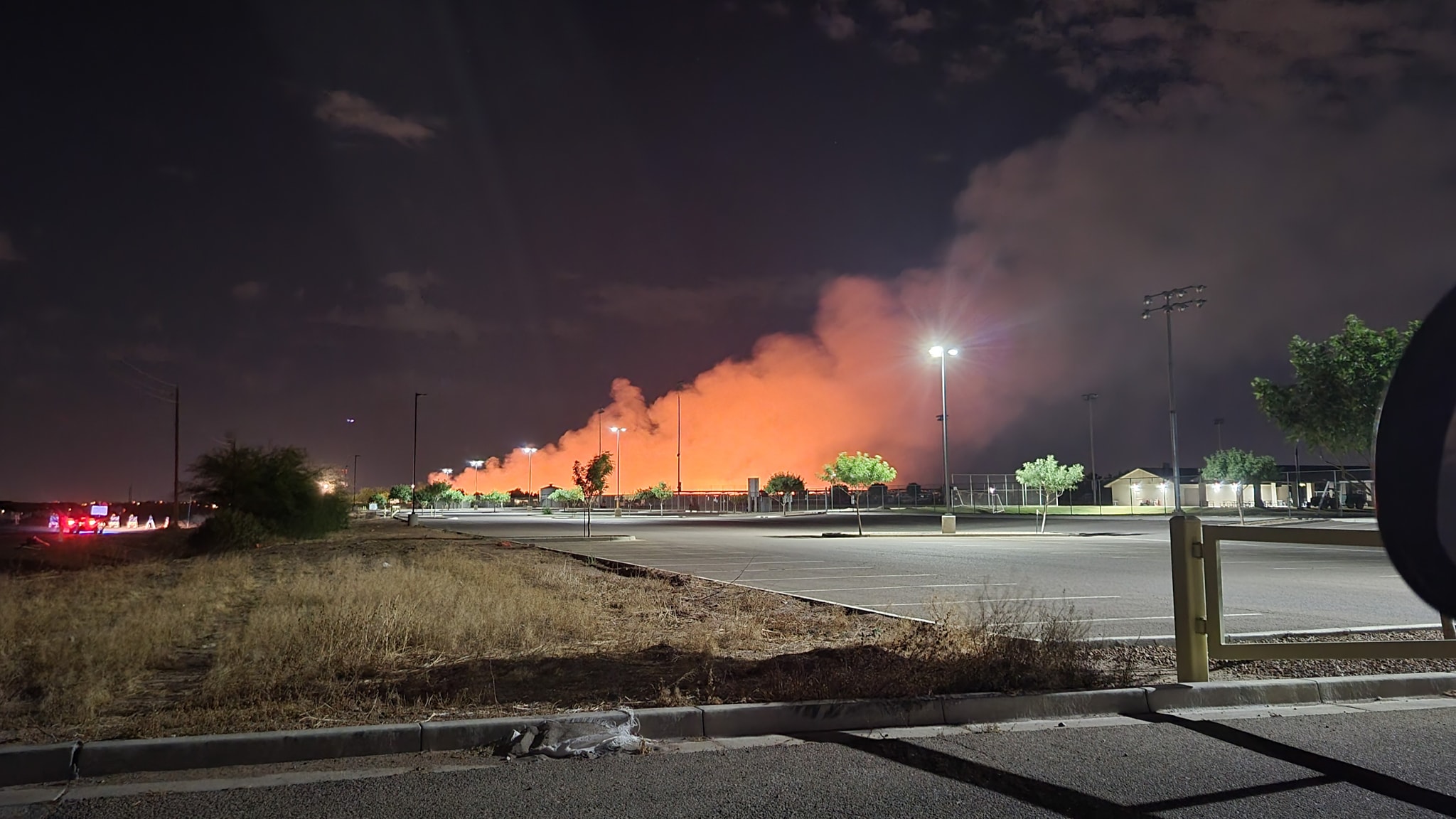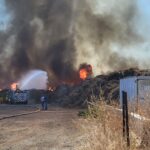Get used to the cloud of haze over Southeast Mesa… it’ll be there at least through the next few days – or even weeks.
A large mulch fire that was burning Tuesday May 31 near Elliot and Sossaman has been contained by Rural metro Fire, but smoke will be present over the next several days.
No structures were burned, and no injuries were reported. Rural Metro said that while the origin was still under investigation, they believe that the likely cause is “spontaneous combustion.”
How does spontaneous combustion happen?
A few factors come in to play. First, rain during the past few months at one point wet the mulch. Spontaneous combustion tends not to happen with dry hay or mulch stored at 15% moisture or less. However, when it gets wet, there is potential for spontaneous combustion.
Chemical reactions from the moisture, microbial growth in the piles, and a change in the availability of oxygen can raise pressures and cause heat to the point of ignition and fire.
The wet mulch stimulates microbial growth, and those microbes will produce heat. This heat further dries out the hay as the microbes seek energy. As the microbial growth intensifies, the heat intensifies, and the internal temperature of the mulch climbs. Tightly packed areas may not allow enough space for the heat to dissipate, and the mulch, in effect, cooks itself. The heat actually becomes so high to kill off the initial microbial growth, but then the conditions are perfect for a more heat resistant bacteria called exothermic bacteria, which then moves in. The exothermic bacteria does the same thing that the earlier microbial growth did – creates heat – but does so at a higher level.
Once the temperatures inside reaches 150-160 degrees Fahrenheit, there is a potential for fire. At temperatures above 160, gases have the potential to ignite once the mulch is exposed to air.
The smoke from the fire will continue to cover the East Valley throughout the coming days and possibly beyond. Residents are being told to keep windows shut, especially for those with respiratory problems.










